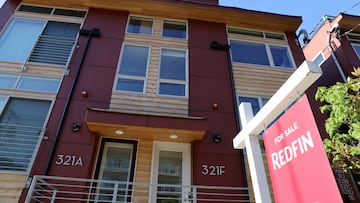Where are rent prices falling in the US in February 2024?
Relaxed building restrictions in the south of the US are driving rents down while the coastal cities remain squeezed.


Experts had predicted a fall in rental prices in the US after a difficult 2023 for tenants. The rental index rose 6.9% over the past year, but that rise is set to change throughout 2024.
“Landlords and property managers are feeling the pressure, especially to rent new construction. They will continue to offer concessions and move-in deals. In the end, they will have no choice but to reduce asking rents,” noted Zumper, one of the country’s largest privately owned rental platforms.
The area seeing the rent price fall most is the South. According to recent data from Realtor.com, median asking rents have dropped by approximately 1.2% compared to a year ago.
Cities like Memphis, Tennessee, witnessed a notable decline of 5.5%, bringing the median rent to $1,247. Additionally, Atlanta experienced a decrease of 3.8% to $1,619, while Austin, Texas, and St. Louis, Missouri, both saw decreases of 3.6%, bringing rents to $1,547 and $1,295, respectively. Miami, which had seen rent prices surge over the past four years, experienced a 3.4% decrease, bringing the median rent down to $2,373.
This is quite the graph.
— Warren J. Wells, AICP 🚴🏙️🦀 (@WarrenJWells) April 17, 2023
In these four jurisdictions that relaxed zoning, new homes increased substantially, while rent climbed only slightly.
The rest of the US? The exact opposite. Slow housing growth and skyrocketing rents. https://t.co/icwmVD4StH pic.twitter.com/crGRuHCmdV
However, in places like Los Angeles and Seattle, rents increased slightly by 0.2% and 1.3%, respectively. New York and Boston continue to experience rising rents, with increases of 2.3% and 2.7%, respectively.
Why is the south getting cheaper to rent compared to the coasts?
These changes in rent prices can be attributed to various factors, but a major difference in the south compared to other places in the US is the available stock.
The politics of America’s housing issues in one chart:
— John Burn-Murdoch (@jburnmurdoch) February 23, 2024
• People and politicians in blue states say they care deeply about the housing crisis and homelessness but keep blocking housing so both get worse
• Red states simply permit loads of new homes and have no housing crisis pic.twitter.com/2A6r0tQSyg
Data from the Financial Times shows the affect of ample housing stock on house prices, in turn affecting renting prices. A factor in this is the time it takes to approve building permits: in San Francisco the average time for a permit to be granted is a whopping 627 days, compared to just 14 days in Dallas. Dallas has seen rents fall by 0.4% in the last month while San Francisco’s rent prices stayed stagnant.
Related stories
“Outside of the major [Californian] cities and their immediate neigborhoods, which are much denser than those elsewhere in the country, people want space and large backyards,” Sonnet Hui, general manager and VP of Project Management Advisors said in 2020. “They’ve put land use restrictions in place to prevent major developments from encroaching on their property and their lifestyle.”
With such slow times to put up new homes, expect the small availability of housing stock in California and New York put a strain on renters’ budgets.

